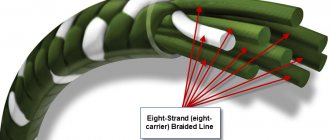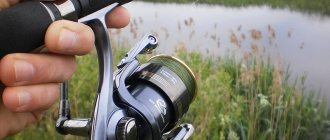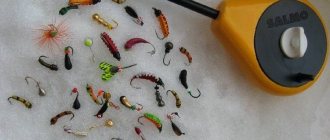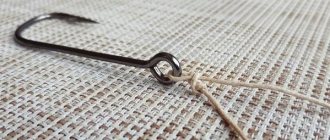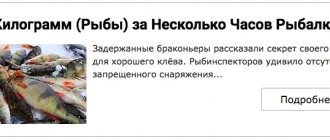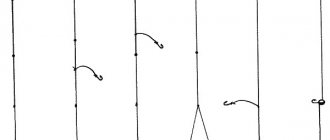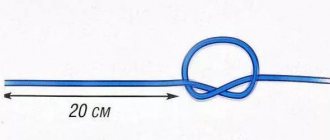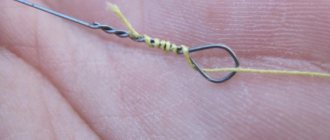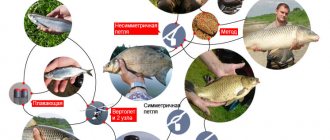Experienced users of the famous Chinese resource Aliexpress know that shopping here is profitable and convenient. You can't think of a product that you couldn't find here. From food to power tools, from clothing to furniture and accessories, sports equipment and products for an active lifestyle - literally everything is here.
However, as in virtually any market, there is a fairly high probability of purchasing a product that does not meet your expectations. This happens quite often with beginners who are just making their first purchases on the site. And this is understandable, because the variety of assortment, as well as the huge price range, can confuse any buyer who finds himself on Aliexpress for the first time.
In order not to be disappointed in the choice of the product you ordered, it is worth knowing about the basic tools for effectively finding the right product. By using them when choosing, you can, of course, quickly and easily find exactly that lot, the quality and price of which will best match your expectations.
You should always remember when choosing a product on Aliexpress that your attentiveness and ability to critically evaluate information are permanent assistants designed to ensure you quickly and correctly select the right product. All information that can help you with this is in the description of each lot. A reliable seller, who cares about his reputation and is aimed at long-term and, naturally, successful work on the site, provides maximum useful information about the product. When reading the description of the lot, you should pay attention to the following beacons:
- Completeness of the information provided. The more of it there is, the greater your chances of actually purchasing exactly the product you are looking for. Lots of photos are great. And it’s even better if the seller, when offering his product, shows a photo of the production process.
- Customer reviews. This is a great tip for any buyer. Everyone who has had even the slightest experience of shopping here is happy to share their results. Here you can find out how well the product corresponds to the quality declared by the seller, whether the seller had problems with delivery, and how willingly he communicates with a potential buyer.
- Cost of goods. Aliexpress is the resource where any product is cheaper than any retail outlet. However, you must understand that in any case, the price of any product is adequate to its quality. A high-quality product that you have chosen on Aliexpress cannot cost many times less than a similar product in any offline store. Do not forget about common sense when searching for the best deal.
What is the ratio of fishing line strength in lb and kg - table
libra (from Latin) lb – is a unit of measurement of weight, equal to one pound, 1 pound is equal to 0.453 kg.
The parameter is responsible for how much weight the fishing line can withstand so as not to break. The breaking load value itself is indicated both in kg and lb, for example: 4 lb / 2 kg.
Do not accept this value as true. In reality, the breaking load may differ significantly from what is written on the packaging. If the manufacturer adheres to all manufacturing standards, then strength measurements are carried out under conditions close to ideal. It is experimentally confirmed that the breaking load of the fishing line depends on its length.
All numbers indicated are written approximately. In the case of identical values, the result in practice will depend on the following factors:
- Manufacturer
- Storage conditions from production to sale
- How new is the fishing line - how long ago was it produced?
Many manufacturers overestimate the parameters indicated on the packages. Japanese manufacturers try to write honest numbers.
If the packaging with fishing line contains the abbreviation IGFA Reted and lb, then the manufacturer is a member of the International Sport Fishing Association, which means 1 lb in kg will be:
| lb | kg |
| 2lb | 1 kg |
| 4lb | 2 kg |
| 6lb | 3 kg |
| 8lb | 4 kg |
| 12lb | 6 kg |
| 16lb | 8 kg |
| 20lb | 10 kg |
| 30lb | 15 kg |
| 50lb | 24 kg |
| 80lb | 37 kg |
| 130 lb | 60 kg |
The bottom line is that the IGFA is in the business of registering world records in fishing. Therefore, they introduced their own standard, where the value of the unit lb is a class, and each class has its own range in kilograms. For example, a 12 lb line has a breaking load of up to 12 pounds, or approximately 5.4 kg.
This option is only used by those who wish to register their world record.
Also, when buying a fishing line, it may have the inscription Lb Dia on it - which means the approximate breaking load of the braid in lb, and the diameter of the thread in mm. Since this parameter is indicated by the fishing line manufacturer, it is most often different for everyone.
How to choose quality braided fishing line
When fishing with a spinning rod, braid is irreplaceable; it is used with a match fishing rod, as well as in carp fishing. The main disadvantages of braided fishing line are its high price, counterfeits available on the market, and a variety of design features, through which an important difference in qualities appears. There are often cords that anglers unequivocally claim are not suitable. However, there are also variations of fishing lines that are most recommended by spinning experts. How to choose a braid? Choosing a braid is very difficult. No one can give a clear answer as to which braid to choose, even when the choice is made under certain conditions. Understanding the issue, let's consider the individual properties of this fishing line. Braided fishing line raises a lot of questions, especially for beginners; sometimes not many experienced fishermen understand braided fishing lines. For example, braided fishing lines have different names: “braids”, “threads”, “cords” and so on. And don’t be surprised when in a later story you encounter different words that mean the same thing.
How to choose braid
Therefore, how to choose a braid. For several years now I have been following the tests of various braids, which are periodically carried out and also published in the media. Over the entire period of observation, I noticed a single pattern: the results of tests on the breaking load of braided fishing lines for the majority are almost the same. The load indicated on the label and the one supported by the fishing line in reality do not coincide by about 30 percent. For example, instead of the indicated 12 kg, a braided fishing line will actually hold a load of about 8 or 10 kilograms. The breaking load of the braid and the diameter are indicated on the label. Fishermen buy it only based on these characteristics. However, this is also typical for most simple monofilament lines.
Braided Line Diameter
The diameter can be accurately determined for monofilament fishing lines, while the diameter of a braided fishing line is generally an abstract concept, which is measured by the sheath or the outer contour. As a result, recently, most braided reels do not indicate the thickness of the braid at all, but only indicate the number of kilograms of breaking load or libra (2 lb - 467 g). But this indicator is enough to make the choice of the required braid, and the indicated breaking load here is less at odds with reality than when combining the “diameter-weight” data.
Material for braiding
Considering the fact that there is no difference in the original material for the manufacture of all braided fishing line on our planet. About twenty years ago, braided fishing lines began to be produced from the high-tech material of polyethylene fibers. Currently, there are only three factories that produce such fibers: the Dutch one (under the Dyneema brand), and under a Dutch license it is produced in the USA (under the Spectra brand).
And another rather famous Japanese one, which also produces these fibers under the Dyneema brand (whether it has a Dutch license or not, I don’t know for sure, but most likely). Therefore, you can find wicker exclusively under the Spectra and Dyneema brands, which are essentially the same product. More recently, stronger and more powerful fibers have emerged under the brand name "Spectra 2000" as well as "MicroDyneema". In terms of cost, these fibers are more expensive and braided fishing lines made from them are much thinner.
As a result, we have practically the same source material. What happens to the fibers in the future: manufacturers of braided fishing lines purchase fiber in production and, according to their technologies, make a fishing line from it, subsequently selling it. According to all kinds of technologies used in the manufacture of fishing line, their characteristics are sometimes very different, although the same material was originally used. Actually, this is where the differences begin, which need to be discussed in detail.
Main groups of braids
In general, braided fishing lines is not a very correct name for all fishing lines of this type, since fishing lines made from polyethylene fibers are made in a variety of ways. There are only two main groups:
classic weave: fibers are twisted into small threads, these threads are twisted into larger threads, and so on. The thickness of the cord, as well as its strength, depend on the number of threads. The stronger the fishing line, the thinner and more sophisticated the weave. Simply twisted bundles, but not intertwined, are very inferior in strength to braided fishing lines. One of the most popular classic type braids is Power pro. Speaking about this brand, I do not single it out in any way, comparing it with other braided fishing lines, I simply mention its celebrity.
parallel multi-filament fishing lines, where the fibers are not intertwined, but are soldered together with an alloy of special substances. The fibers in the fishing line are placed parallel to each other, being in a bundle, thanks to the fusion of special additives and heating. This type of braided fishing line has many varieties of alloys and different manufacturing companies invent their own original tricks. An example of this type of braided line is Fireline. This line can wind up to the very edge of the spool, since it is so rigid, and unlike classic types of braided lines, it simply unravels, and is not so afraid of “beards”.
Of course, multifilament fishing lines are stronger and thinner, but there is practically no practical difference between these two types of braided fishing lines. The difference between classic braids and multi-fiber fishing lines is their cost; classic ones are cheaper, others are stronger and significantly more expensive. For example, when you are satisfied with the existing breaking load of classic braided fishing lines, then why overpay. You know, in recent years, classic braiding has been purchased by fishermen significantly more, as weaving technologies have become more advanced, and special impregnation substances are used to improve the quality of the braiding.
Choosing a braid is a whole science
The right braided line helps the fisherman in difficult situations. Let's say, when fishing with a monofilament line, we install thinner fishing line on the leashes than the main one, so that in case of a snag, only the leash breaks, and at the same time the entire fishing line remains unharmed. So with the lace everything happens exactly the opposite. If you install a “frail” and not coarse braid for fishing in a difficult or rocky place, then you will either tear it very quickly on the stones. Or such a braid will break when caught on any snag, and you will lose your precious bait.
When fishing with a strong cord, the hooks on the bait are more likely to break than the thread to break, or you will remove a whole “tree” from the water, but again you will not waste the bait. Therefore, when choosing braid for fishing, compare the possibility of hooking, the dimensions of the trophy, as well as the breaking load of the fishing line. Undoubtedly, a thinner braided line is preferable: when casting, it increases the range and accuracy, although it is still better to play it safe with a margin of safety, because the braided line is already thin that this excess margin of strength will practically not affect the thickness of the thread.
I use three options for laces: with a breaking load weighing up to 4.5 - 7.5 kg. (when fishing with light or ultralight), up to 8.5-12.5 kg (with standard fishing), up to 25 kilograms when fishing by trolling or with a side rod.
In addition to the breaking load, concentrate on the “roundness” of the braid. Flat or flattened braided line winds poorly and unevenly onto the reel spool, which results in much more tangling. And as a result of this, “beards” are formed, sails are formed during casting and, most importantly, they quickly become unusable.
Be sure to study the quality of impregnation of braided fishing line. If previously many laces were knitted from Dyneema fibers, today impregnation is used everywhere. Impregnation protects the fibers from various threats: the effects of sharp stones, sun, water, frost and other abrasive particles, improves the glide of the braid, and also increases the strength of the knot.
It is very important that the impregnation adheres well and for a long time to the wicker line. On some models, the impregnation peels off even when you try to tie a knot. Therefore, when purchasing, look in the packaging box for the presence of such crumbled particles. If there are a lot of such particles, then you should refuse to purchase.
Please also note that the impregnation and color of the braid are two different things. The point is that polyethylene fibers, in principle, cannot be given a reliable color. As a result, the fishing line loses its original color after almost a few fishing trips, although this does not lead to a deterioration in the quality of the braid. Braids that do not lose color are made with the inclusion of fibers from other materials in their structure.
How to choose a lace when purchasing
Until now, there are not only fakes of well-known companies, but also simply low-quality braided fishing lines, which, by the way, can now be made in China at the request of anyone. All you need is “money” and desire, and any organization or person will be able to weave wood from “Dyneema” under a certain brand and name. Such braiding will not be very bad, although in terms of quality it will be seriously inferior to laces from leading manufacturers. There are no effective ways to check the quality of the braid. Until you see it in action, you can only operate with indirect signs. Some fishing stores buy braided line spooled on huge spools, test it themselves, and then sell it under their “true labels.” Such a purchase is advantageous in that you can take any footage you need. Although, as a rule, such braiding is not of optimal quality. However, often it all depends on the magnitude of your claims.
What else is worth recommending when choosing:
Use the same braided fishing line and then you will be able to distinguish a high-quality fake literally at a glance. And better than the smell. I recognize my lace by its smell.
You should trust a good fishing store and purchase only the most famous laces from global manufacturers. Ideally, such a store should have a certificate for the products it sells.
Carefully inspect the thread visually on a spool before purchasing. If you see adhesions, abrasions on the thread, or a difference in the color of the lace in the winding, refuse this purchase.
When you get home from the store, wind the braided line onto the reel spool. It is better to wind such thread onto the reel spool wet, so the fishing line will fit better on the spool. After winding, conduct a visual inspection of the fishing line.
If the forest turns out to be fake, then it is worth remembering that by law you can return the product back to the store within 14 days.
Tips for using braided line:
To avoid damage to the spinning rod and the reel, always keep the friction brake of the reel loose and adjust it first before fishing. Periodically inspect the tulip, as well as the rod rings, for “cuts” and burrs.
When fishing with braided lines, use only high-quality reels.
Most articles and films advise removing the first meter of braid after two to five fishing trips. Because it is this part of the fishing line that not only experiences enormous loads when casting or retrieving fish. And also most of all it deteriorates on vegetation and stones. But in fact, I am almost convinced that these recommendations were initially disseminated from the lips of refined “natives”, and were simply thoughtlessly repeated by our fishermen.
Braid wear
In fact, the lace is a very strong forest. And it’s not very easy to “wear out” it to such an extent over several fishing trips. The degree of wear and the moment of removal of the worn part can be determined visually. The wear of the thread depends on the fishing conditions and if the line is safe and sound and the “fluffing” of the line has not yet begun, then there is no need to worry. If sometimes even a small dent on a monofilament line can reduce its true strength by half, then breaks of several fibers of the lace (within reasonable limits) do not lead to its visible weakening.
With a “dead” hook, it is not necessary to tear the lace with a rod or reel. It is necessary to position the fishing rod parallel to the water, and wrap the braid around a strong glove or sleeve and try to tear it off.
It is best to burn excess pieces of lace rather than scatter them along the banks. They rot for a long time, and any animals or birds can become entangled in them and die.
When using braided fishing line directly while fishing, you need to know their strengths and weaknesses and use them to the fullest.
Pros of braiding:
Inextensibility. Thanks to this quality, the bite is felt better and at the same time it is easier to control the bait even at a considerable distance. In addition, due to the inextensibility of the lace, you can quickly carry out the correct hooking.
Lack of "memory". The thread does not retain or “remember” absolutely any bends or kinks. In particular, you can fish with braided line even without swivels.
Significant strength and wear resistance. You can fish with a thread in the most difficult spots. An ordinary fisherman can catch at least 1-2 full seasons on one braided line. But in reality, this period sometimes stretches to three or even four seasons. If you do not use the lace, then it will not deteriorate at all from storage and will be able to wait its time for at least 30 years.
Disadvantages of braid:
Such a strong line puts significant pressure on the rod, guides, and also the reel. Therefore, not only high-quality and strong gear is necessary, but also regular care of the gear.
Inextensibility interferes with catching fish and experience is required in handling the rod and the clutch.
Compared to monofilament fishing line, the lace will be able to collect absolutely all the dirt and with these particles harm the rings, as well as the reel.
Go Fishing ©
Line diameter at breaking load in LB
In Russia, most fishermen are accustomed to selecting fishing line according to thickness, which is indicated in mm. But at the moment, almost all markings are in lb, especially for imported manufacturers - the USA and Japan.
But what about those who don’t know the thickness in mm of the fishing line, the breaking load of which is indicated in librs? To do this, below we have provided a table of the relationship between these parameters, which shows the numbers not only for monofilament fishing line, but also for braided cord.
| Tensile strength in pounds | Nominal diameter of monofilament in mm | Nominal diameter of the braid in mm |
| 1lb | 0.10 mm | – |
| 2lb | 0.13 mm | – |
| 4lb | 0.20 mm | – |
| 6lb | 0.22 mm | 0.128 mm |
| 8lb | 0.25 mm | 0.148 mm |
| 10lb | 0.27 mm | 0.165 mm |
| 12lb | 0.32 mm | 0.183 mm |
| 15lb | 0.35mm | 0.205 mm |
| 20lb | 0.40 mm | 0.235 mm |
| 25 lb | 0.45 mm | 0.260 mm |
| 30lb | 0.50 mm | 0.280 mm |
| 40lb | 0.60 mm | 0.330 mm |
| 50lb | 0.70 mm | 0.370 mm |
| 60lb | 0.80 mm | 0.405 mm |
| 80lb | 0.90 mm | 0.470 mm |
It is important to understand these relationships, because the thickness of the fishing line affects the casting distance, windage in the wind, as well as behavior in the current. Of course, these values may vary slightly among several manufacturers for various reasons.
These are: low-quality production, equipment used, production technologies, and so on. Having decided for yourself what diameter of fishing line you need, you can easily, using our tables, determine both the breaking load and its diameter in lb.
How to choose braid for spinning?

Over the past 20 years, a type of fishing line that we call “braided cord” has become firmly established in the arsenal of modern fishermen. Aka “braided line”, aka “braid”, aka “thread”. Now there are a huge variety of varieties of this fishing cord on store shelves. And the vast majority are foreign manufacturers, mainly from Japan and America. They all differ not only in price and manufacturer, but also in unwinding length, color, and strength characteristics. And, as a rule, each one is designed for certain conditions or type of fishing. It is impossible to say unequivocally which braided lines are best for fishing. It depends on many factors. Therefore, in order to successfully choose the best braid for jig, feeder, twitching, ultralight and other subtypes of spinning fishing, you need to know some nuances.
What is braid
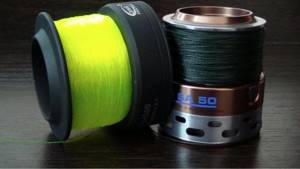
First of all, let’s figure out what a “braided cord” is as such. In essence, it is a multi-filament fishing line made from interweaving several threads together. Each thread in turn consists of dozens of individual polyethylene fibers. The raw material for the manufacture of such cords is a special polymer. It is produced in only a few factories in the world and is better known under the Dutch brand DYNEEMA, and in America - SPECTRA. All so-called “braided fishing lines” are made from the same fibers; the differences lie in the method of joining (weaving) and the protective impregnations used.
Characteristics
The first and most important difference between braid and monofilament is a significantly higher breaking load . For many, this parameter is the key criterion for choosing a fishing line. However, there are several pitfalls here that allow the manufacturer to wishful thinking. Since, due to the specifics of production, even the highest quality braid from a famous brand does not have an ideal circle in its cross-section, the diameter indicated on the box may not be accurate. And the breaking load, measured during manufacturing, is indicated on the basis of special tests carried out in the “greenhouse” conditions of factory laboratories. In practice they differ from real ones. The cheaper the cord, the greater the difference. In this case, the knot used to attach the bait is of great importance and, depending on the type of braid, may differ. And the manufacturer often indicates the optimal unit for a particular instance on the box.
Simply put, if the braided line shows a diameter of 0.13 and a breaking load of 10 kg, then one of the parameters is clearly too high, or most likely both. Unfortunately, this “disease” affects absolutely any manufacturer. And this does not mean at all that you got a “left” product. It’s just that such “rules of the game” have historically already developed in the braiding market. The most accurate to real indicators of diameter and breaking load are Japanese-made cords.
Another advantage of braided cords is minimal stretch . This very important property reveals itself best when jig fishing. Indeed, due to the lack of elasticity, the cord very clearly conveys the contact of the bait with the bottom or obstacles and allows you to catch even the weakest fish bite. Modern braided cords have elongation values ranging from 2% to 5%, which is conditionally zero.
The next important parameter is the wear resistance of the cord . The way it reacts to contact with various abrasives; driftwood, shell, sand. Here, when choosing, it is very important not to make a mistake with the purpose of a specific model and to understand for yourself where and how the fishing will be done. If you are fishing in snags or in a place where there are sharp edges covered with shells, then it is best to use 4-core lines with maximum strength. In case the longest cast is required or fishing will take place in non-contact conditions. For example, in the water column or on the surface. Then 8-core cords are best suited for such purposes. They have a more round and dense cross-section, due to which the friction in the rings during casting is significantly reduced. In addition, the elongation coefficient of 8-strands is minimal, and the breaking loads are very good. Their only disadvantage is their very weak resistance to abrasive, because... their structure uses a larger number of fibers. But each of them is much thinner than in 4-core cords.
When choosing braid for the feeder, you should remember that the gear will be in direct contact with the bottom. Therefore, it is better to use a cord that does not like friction against shells and stones only as the main one. And to protect expensive equipment, use a leash or shock leader made of monofilament or fluorocarbon.
In addition to weaving technology, there is a method of thermal sintering of threads into one piece with additional processing. Such cords are often found from American manufacturers and have good flight characteristics due to their very even and smooth surface. In addition, they have minimal noise when passing through the rings. But such cords begin to become shaggy faster than others during use, especially in conditions of frequent contact with shells, sand or driftwood.
Buying fishing line on AliExpress, what does the number of lines mean?
In our age of high technology, things that have long been familiar to us are being improved, including fishing lines. Not long ago, braided fishing line was invented, which allows the fishing enthusiast to reach a new level.
For such a fishing line, materials are used that were originally used in the aviation industry, and over time began to be used in other areas of human life.
When choosing braided fishing line on AliExpress
you can look at various reviews from customers, however, many people who left reviews are not very knowledgeable about fishing gear, so it is better to focus on the data provided by the manufacturer.
But here, too, problems arise, because automatic machine translation into Russian is often incorrect. To help you navigate the characteristics of fishing lines, we have prepared a short overview.
What is braided line?
Braids, or braided fishing lines, are cords consisting of several intertwined artificial threads.
Typically, three, four or eight such strands are used. A regular fishing line with three strands is called a “pigtail”.
It has its drawbacks, such as looseness, lack of tight winding on the reel spool, which is why it often gets tangled when casting a fishing rod. The line of four cores is denser and does not have the above-mentioned disadvantages. These lines are almost flat in cross-section.
And the densest line is made of eight cores, so it is used when you need to cast over a long distance. The eight-strand fishing line appears round in cross-section.
Types of fishing line weaves
When creating a fishing line, two weaving options are used:
Classic
- involves the weaving of small threads, which are then intertwined with each other. This technology is used in the production of most fishing lines.
Sintering of threads and their braiding.
This line is very rigid, but practically does not tangle, which avoids the appearance of loops.
It happens that out of four threads five centimeters long, only 1 centimeter of fishing line-cord is woven. The longer the threads used and the shorter the resulting braid, the stronger and more durable the braid will be. Sometimes manufacturers protect the fishing line with a special sheath, but again the possible casting distance is reduced.
It is also worth knowing that painted braids significantly lose their strength due to the effect of paint on the material
.
What does the number of lines mean?
For example, if you see that the proposed fishing line has a certain number of lines (0.1, 0.3 or 0.5),
this means the line number in the general classification. Indeed, in this case, the word “line” means the word “fishing line” (from the English line - fishing line). Sellers also use the phrase “braided line” - braided fishing line.
The easiest way to order fishing line is when there is a table of numbers ; it will allow you to navigate and select the required product. Comparative tables of Japanese and European markings of braided lines, which also indicate the degree of breaking load, are very convenient for orientation.
Typically, one set of terms is used to classify braids; you need to know them:
- Shore. This is a line for fishing from the shore; as a rule, this braid is intended for fishing with a spinning rod and for casting over long distances.
- Off Shore Jigging. Lines for vertical fishing are usually painted in different colors.
- Rock Fish Game. They practically do not wear out, so it is better to use them in reservoirs with a rocky bottom or in root zones.
- Trout. Designed for trout fishing - quite thin, but at the same time elastic and with a large margin of strength.
Braided lines are usually compared to monofilament lines, but braided lines are in many ways superior to nylon lines.
Among the obvious advantages
braided fishing line-cord we note:
- No stretchability. This makes it easy to feel when the fish is biting and ensure a hook.
- Strength. Despite the fact that the braid has a small diameter, its quality allows for long casts.
- The line does not ripple when used repeatedly.
- Wear resistance. Braided fishing line lasts for several seasons of active fishing.
- Not exposed to external influences. Wicker is not afraid of sunlight, easily tolerates temperature changes, and is resistant to salt in sea water.
With all this, braided fishing line also has its disadvantages:
- Due to the lack of stretchability of the fishing line, you have to work with the reel when pulling the catch out of the water in order to prevent the fish from falling off the hook.
- The fishing line collects abrasive from the water. Grains of sand get between the threads of the cord and subsequently damage the reel roller and the rod guide ring.
- The line freezes over. The braided cord of the fishing line is easily saturated with water and freezes at low temperatures, the casting distance is reduced, and there is a need to use lubricants to prevent damage to the reel and rod. Therefore, it is not recommended to use it for ice fishing.
Braid color
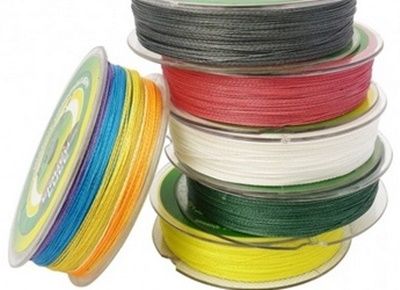
The bulk of all braided cords are divided into two types based on color - dark, camouflage shades and bright, fluorescent ones for greater visibility. Initially, you might think that, purely logically, the second color option should be less useful. After all, if a person sees it well, then it will be more noticeable to the fish, which will reduce the number of bites. In practice, no one has statistically identified the effect of line color on fish bite. But to reassure yourself, you can color the last couple of meters of the cord in dark colors using a regular waterproof marker. This way we retain the main advantage - the ability to track wiring as comfortably as possible. Especially when jigging in low light conditions. And at the same time we exclude the possibility of a negative effect of bright color on the bite. According to the color spectrum, it is lemon yellow, bright green, blue or white.
Tips for Beginners
Choosing a braid is an important process that must be approached with all responsibility. Beginning fishermen make a lot of mistakes when trying to purchase a cheap Chinese product, but then they are very disappointed and speak poorly of such a product. To avoid becoming a victim of a rash purchase, it is important to carefully consider the characteristics of a braided cord, as well as read reviews of other anglers about specific models. When choosing a fishing line for your tackle, the following parameters are taken into account:
- Strength. The purchased products must be strong enough, because when fishing in difficult conditions with a rocky bottom, snags and other obstacles, the load on the equipment increases. A reliable thread will be able to withstand the heaviest loads without rubbing against stones or bottom debris. Moreover, if the cord gets caught on a log or a sheaf of algae, the leash will most likely break, but the line itself will remain unharmed.
- Diameter. To successfully cast hooks with bait over a long distance, it is better to use thin cords. However, when choosing such products, you need to carefully pay attention to their strength. It is known that this parameter does not depend on the thickness of the fishing line, but plays an important role in the resistance of the equipment to possible aggressive influences.
- Permissible breaking load. To successfully fish for large fish, you need to choose high-quality models with a high breaking load threshold. When fishing by trolling, it is advisable to use a braided line that can withstand a load of up to 25 kg or even more. The same goes for sea fishing, where you have to get real monsters out of the water.
- Impregnation quality. Modern braided fishing lines are treated with high-quality impregnation, which protects the product from any aggressive influences and extends its service life. The main task of impregnation is to protect the thin thread from all sorts of factors, including contact with sharp stones, water, high or low temperatures, and abrasive particles.
If a novice angler approaches the issue of choosing braid correctly, then the purchased option will be able to surprise him with its advantages after just a few minutes of use.
Source: sudak.guru
What is the number of lines in braided fishing line?
Multicolor
Multi-color cords are also available for sale. They can be painted in a different number of contrasting colors with different markings and different spacing. With the help of such a cord you can easily determine the casting distance. But the origin of such braids comes from sea fishing. Abroad, colorful lines are often used when fishing vertically from a boat. So at great depths you can easily determine where exactly the bait is located. In addition, multi-color line is very suitable for trolling, because... It is important to know at what distance the bait is lowered.
Paint quality
Speaking about the problem of fading, first of all it is worth noting that polyethylene fiber is very difficult to dye. Therefore, after a certain amount of fishing, you will inevitably have to face the fact that the richly colored line will become paler, and the working area may even take on its native gray shade. Many brightly colored lines begin to leave their mark even while being wound onto the rings of a spinning rod or line roller on a reel. In this regard, nondescript, white cords remain unrivaled. Due to the absence of coloring components, they do not lose their strength, but are visually suitable for all types of spinning fishing.
Winter period
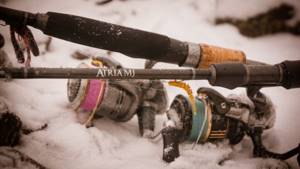
The use of braided cords in conditions of subzero temperatures imposes a number of restrictions and inconveniences, the main one of which is freezing. Monofilament certainly freezes much less than braided line, but not to such an extent as to tip the scales in its favor. The most suitable for winter are 4-core cords with the most dense weave, and the lower the diameter, the better. The fewer fibers in the cord and the lower the diameter, the fewer loopholes there are for residual water. It is important that the cord is as smooth as possible and has as little lint as possible. Such braids minimally “drink” water, the remains of which lead to freezing of the cord itself and the guide rings on the spinning rod. The degree of freezing can be significantly reduced by treating it with a special “antifreeze” impregnation, but it will not last long and will evaporate after a certain number of throws. In any case, it is necessary to understand that the use of braided cords in winter subjects them to increased loads, which can cause the cord to become “out of condition,” especially in the work area.
What is a “braid”?
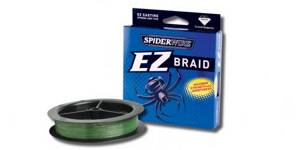
What does the number of lines on bobbins mean? When weaving a cord, 3, 4 and 8 cores can be used. A cord woven from 3 threads is called a “pigtail”, it is quite loose, it is loosely wound on the reel spool, which is why loops often arise when casting and retrieving the bait, it gets tangled easily, and the resulting “beards” can be untangled with great difficulty. The 4-core cord has a denser structure and, accordingly, does not have many of the disadvantages inherent in the 3-core cord. On spools with such a cord the number 4x is placed.
The 8-core cord has the tightest weave. It is smoother to the touch and allows for longer casting. The spools have an 8x symbol on them.
On some lines there are markings indicating in what conditions and what kind of fish it is recommended to catch with such lines. This designation of cords is typical for Japanese manufacturers. Domestic spinning anglers are no longer surprised by this marking, and they have found use for such cords in Russian fishing conditions.
The most commonly used classification is:
- Shore - shore fishing. This refers to sea fishing, but no one objects to fresh water fishing:
- Sea Bass. It assumes catching a specific fish, but in reality it means a universal line suitable for any type of spinning fishing;
- Surf/Trowc. Cords for long casts, for fishing on a sandy bottom;
- EGI. Sinking braids with increased resistance to abrasion when fishing in rocks;
- Shore Jigging. Cords that have colored markers at certain sections, with the help of which you can determine the casting distance.
- Rock Fish Game. The most abrasion resistant cords.
- Off Shore Jigging. Lines designed for vertical fishing. They also have different colors.
- Bass. Lines for fishing largemouth bass. They are quite thick, since fishing is carried out with casting gear, and the thickness of the cord when fishing with a multiplier does not in any way affect the casting distance.
- Trout. Lines for trout fishing, including:
- Area. Thin lines for catching rainbow trout on “platforms”;
- Big Trout & Salmon. Cords for catching salmon in rivers are strong, inconspicuous and elastic.
Choosing Braided Line
Everything in the world is changing, and the fishing world is no exception. Fishermen are armed with modern technologies that allow them to produce increasingly high-quality and reliable fishing rods that are highly durable with low weight; also, conventional monofilament has been replaced by a more durable and high-tech braided cord, or in common parlance, braided line. In this article I will tell you how to choose a braided fishing line.
If just a few years ago braided fishing line was very rare and expensive, so only “thieves” fishermen could afford it, today there is a huge selection of different braided lines, which differ from each other in color, diameter, and, of course, at a price. How to choose a quality product among all this variety?
The main differences between braids
First of all, all braided fishing lines differ from each other in the way in which the fibers are connected to each other. Based on the type of fiber connection, there are three main groups of braided lines.
Pigtail
The first group is braided braids. The fibers of the thread in this type of braid are woven together, and in appearance this braid resembles a braid. In connection with this feature, it got its name. The most popular fishing line of this type is the American “Power Pro” braided line.
Sintered fishing line
The second group is braids, the fibers of which are connected by applying high temperature and high pressure. These are so-called sintered braided lines. The most famous braided line, which is made using this technology, in my opinion, is the braided line under the brand “Fire Line”, which literally translates as fire line.
Shell braid
The third group is the so-called shell braids. The fibers in such a fishing line are not intertwined or welded under high temperature; they are located in a sheath, which is made of high-strength materials.
General description of braided line
Braided fishing line or braided fishing line is a type of fishing line made from modern high-strength polyamide material.
The name of fishing line comes from the process of its manufacture, that is, weaving (soldering) fibers into a common, single cord.
The purpose of any fishing line is the ability to cast with bait of various weights, hook fish and successfully land it. Braided fishing line takes precedence in these matters.
Other names for braided line used by fishermen:
- network;
- cord;
- braided thread, etc.
Features of braid varieties
Now let's look at the features of each type of braided fishing line. Braids of the pigtail type are the most common among anglers, as they have an optimal price-quality ratio. Their advantages include low price, a wide selection of different manufacturers, almost zero memory, and good wear resistance. But besides the advantages, the braided braid also has a number of disadvantages , the most important of which, in my opinion, is the shape of the section. Regular monofilament has a round cross-section, while most braided braided fishing lines have a flat cross-section. This significantly affects the casting distance, and, as you can understand, not for the better. Also, such a fishing line has such a bad property as sawing through the rings, of course, this can only happen when using insufficiently high-quality fittings, but this fact does exist, the same applies to the line roller in the reel. In addition, when retrieving the bait, this braided fishing line makes a characteristic noise. Due to the fact that braided fishing line absorbs water well, it is almost impossible to use it in cold weather, as it quickly freezes and wears out, however, it absorbs not only water, but also various special impregnations that still allow its use at negative temperatures.
Braided fishing line of the second type also has a number of significant disadvantages - it has a low service life. With intensive fishing, such braid quickly loses its original structure, which affects its service life and, of course, quality. If you fish intensively, you will have to change the braid at least every season, although this still depends on the diameter of the line and the loads it experiences during fishing. Fishing lines sintered under high temperature and pressure do not absorb water, therefore, it will not be possible to use any special impregnations. But despite the fact that they do not absorb water, fishing at subzero temperatures is hardly possible, since microparticles of water still accumulate on the surface of the fishing line. If, in addition, the integrity of the top layer of the fishing line is damaged, then it will also absorb water. In addition, this type of braided fishing line has memory, it is more rigid than the first type of braided line, therefore, it has better sensitivity, and it is also better to untangle it if the so-called beard occurs, but excessive rigidity reduces the casting range. In addition, this type of braided line is represented by only a few brands, so anglers have little choice. The advantages of sintered braid include the fact that it has a more rounded cross-sectional shape, and it also glides better in the rings due to a smoother surface, which increases the casting distance, but this only applies to high-quality fishing line, which will retain its original structure for a long time.
Braided fishing line of the third type is the least widespread, as it has more disadvantages than advantages.
It is almost impossible to find high-quality hull braid. With frequent fishing with a spinning rod, the shell quickly wears out, various foreign particles begin to penetrate into it, including moisture and dust, which shorten its service life. The advantages of such a fishing line include an almost circular cross-sectional shape, which most closely resembles a monofilament; also, such a braided line glides very well in the rings, which makes it the most attractive in terms of casting range. It does not saw through low-quality rings, and also practically does not emit the noise characteristic of the first and, to a lesser extent, the second type of braids during wiring.
Types of knots for braided fishing line
Knots that are used when knitting monofilament thread may not be suitable for knitting braided yarn, since monofilament has unique features.
In order for the knot to be effective and not degrade the properties of the cord, these conditions must be met:
- Know about the cross-sectional shape of the cord, which can be round or square. When the knot is tightened, the individual strands of the cord become twisted, which affects the characteristics of the braid. In order to skip this moment, it is better to knit knots from a round thread, it is least susceptible to deformation.
- Take into account the thickness of the braid. The thickness depends on the number of woven threads in the cord. The smaller the diameter, the more gentle the knots should be.
- Before the last stage of tightening, be sure to moisten the constructed assembly. So, during tightening, the thread heats up and this can affect its structure. The more complex the fastener, the more the line rubs in tight places. You can moisten it with saliva, which is what many fishermen do.
Types of the most popular and reliable knots for braided fishing lines Palomar or “Palomar knot”

The length of the thread depends on the length of the leash used, and can be from 20 to 50 cm.
Uni or “Uni knot, Grinner knot”
The “uni” knot can be used in cases where the eye of the hook is small and it is impossible to thread fishing line or fishing line of too large a diameter into it.
how to knit a “Clinch” or “Improved Clineh” knot in this video (FishingVideoUkraine channel)
Diagram of the clinch knot in the picture
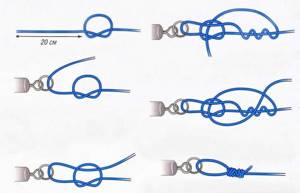
Also see how to properly tie a carabiner or swivel to a braided line (by Victor Pol)
In his video instructions, Sergei Yakovlevich will demonstrate how to knit cords together
